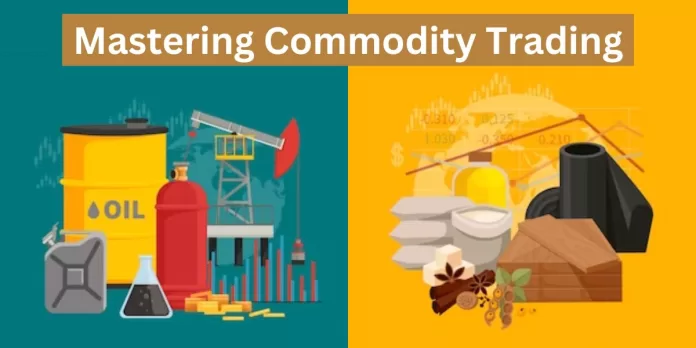Commodity trading is a fundamental component of financial markets, providing a platform for the exchange of various raw materials and their derivatives.
Commodities can be broadly categorized into two types
Hard commodities and soft commodities. Hard commodities, such as metals and minerals, are typically used as inputs in the production of other goods and services. On the other hand, soft commodities, like agricultural products (e.g., rice and wheat), are primarily consumed directly as food or other initial products.
There are two main types of commodity markets in India: spot markets and futures markets.
Spot markets: Spot markets are where commodities are bought and sold for immediate delivery. The price of a commodity in the spot market is determined by the forces of supply and demand.
Futures markets: Futures markets are where contracts are traded for the future delivery of a commodity. The price of a commodity in the futures market is determined by the expectations of buyers and sellers about the future price of the commodity
India has six major commodity trading exchanges:
- National Multi Commodity Exchange India (NMCE)
- National Commodity and Derivative Exchange (NCDEX)
- Multi Commodity Exchange of India (MCX)
- Indian Commodity Exchange (ICEX)
- National Stock Exchange (NSE)
- Bombay Stock Exchange (BSE)
Commodity markets can be exciting but also come with significant risks.
How to assess risk in the commodity market, Here are some tips:
- Understand the different types of commodity risk. There are a number of different types of commodity risk, including price risk, supply risk, demand risk, and operational risk. It is important to understand each type of risk and how it could impact your investment.
- Identify your risk tolerance. How much risk are you comfortable with? Some investors are more risk-averse than others. It is important to identify your risk tolerance before investing in commodities.
- Diversify your portfolio. One of the best ways to reduce risk is to diversify your portfolio. This means investing in a variety of different commodities, as well as other asset classes such as stocks and bonds.
- Use hedging strategies. Hedging strategies can be used to reduce your risk exposure. For example, you could purchase a put option on a commodity to protect yourself from a decline in prices.
- Monitor your investments regularly. It is important to monitor your commodity investments regularly and make adjustments to your portfolio as needed.
Here are some additional tips for assessing risk in the commodity markets:
- Consider the macro environment. Economic growth, inflation, and interest rates can all have a significant impact on commodity prices. It is important to consider the macro environment before investing in commodities.
- Analyse historical data. Historical data can give you an indication of how commodity prices have fluctuated in the past. However, it is important to keep in mind that past performance is not indicative of future results.
- Use risk management tools. There are a number of risk management tools available to commodity investors, such as stop-loss orders and trailing stop orders. These tools can help you to limit your losses.
Disclaimer:This blog has been written exclusively for educational purposes. The securities mentioned are only examples and not recommendations. It is based on several secondary sources on the internet, and is subject to changes. Please consult an expert before making related decisions.


